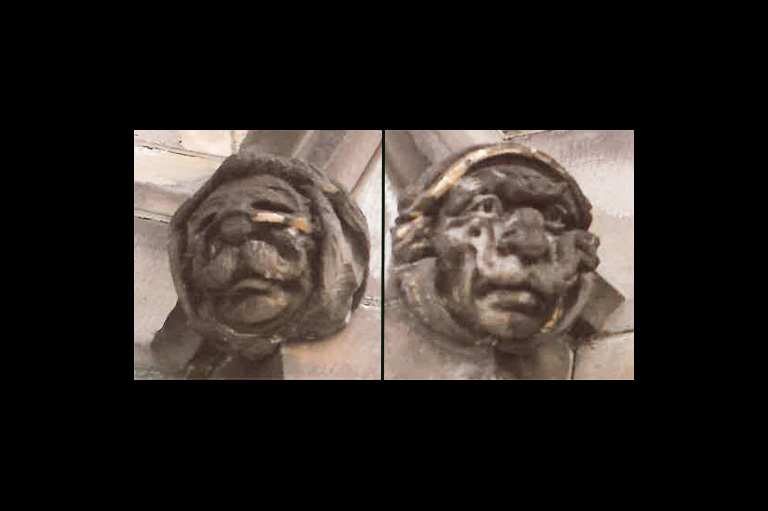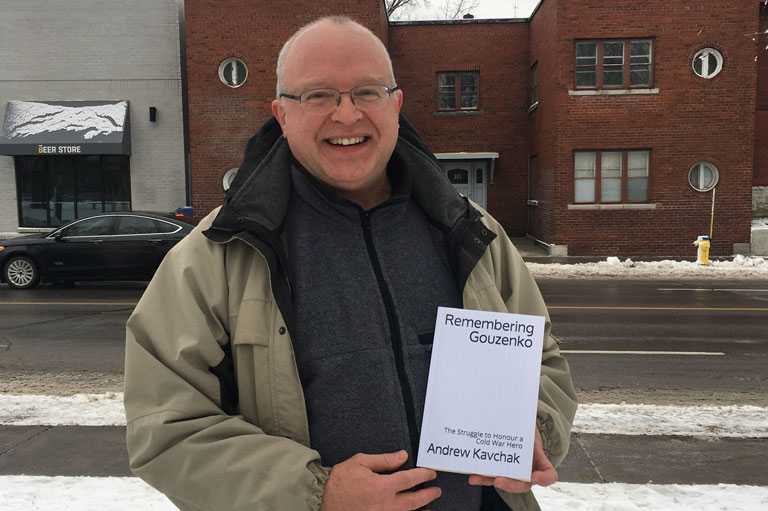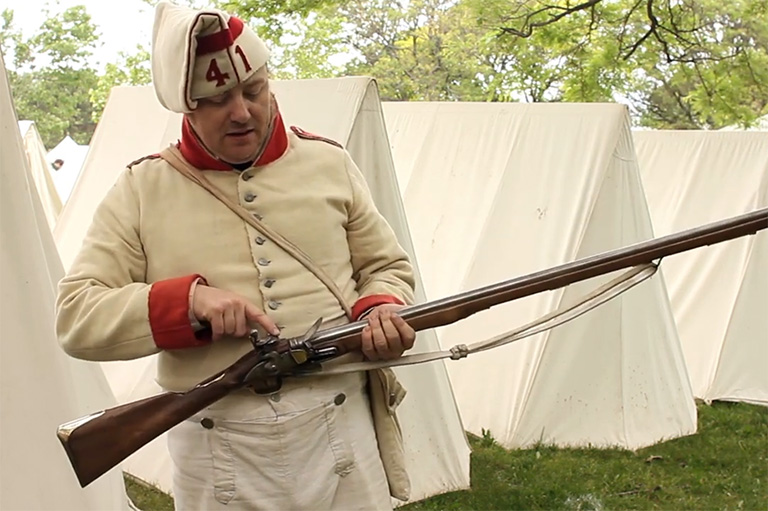Spy School Secrets
Camp X was the nickname of the spy-training school that operated in Canada back in the 1940s. The place was top-secret. Most people had no idea that it even existed. Nevertheless, it played a very important role in World War II.

Needed: Undercover Agents
World War II began on September 3, 1939, when Britain and France declared war on Germany, which was under the control of Adolf Hitler. On September 10, Canada officially joined the war on Germany as well.
By 1940, things were looking grim for the Allies. German troops had invaded much of Europe, and there was a real possibility that Britain was next. British Prime Minister Winston Churchill knew something more had to be done. He decided to wage a “secret war” against Hitler’s armies. He would send undercover agents deep into enemy territory to weaken German forces. But first, these agents needed to be trained.

Canada's Spymaster
Churchill asked a friend to establish a spy-training school in Canada. This friend was from Winnipeg, Manitoba. His name was William Stephenson, but people in the spy world call him “Intrepid” (which means fearless).
Stephenson was a true spymaster. During World War II, he was in charge of Britain’s intelligence operations in North and South America. He directed the activities of many wartime spies. And he knew that creating a spy school in Canada was a good idea. The school would help prepare recruits from Canada, the U.S., and other countries for secret missions overseas.

Location Location!
The location of Camp X was chosen very carefully. William Stephenson wanted a quiet, private spot for the operation. After all, the camp would be training the future spies of WWII. The site had to be secluded enough to mask the activities and identities of the students.
Stephenson and his colleagues settled on a spot near Whitby, Ontario. It was a large stretch of farmland on the north shore of Lake Ontario. The property had open fields, forests, swamps, and rocky bluffs. Perfect training grounds for potential spies!
Open for Business
Camp X opened on December 6, 1941. It served as a preparatory spy school. Successful graduates at Camp X moved on to more advanced schools overseas.
But getting through training at Camp X wasn't easy! Read on to find out what sorts of things trainees had to do.
Name Game
Camp X had several official titles. The British Security Coordination called it Special Training School 103 (or STS 103). The Canadian military called it Project J. And the RCMP called it S 25-1-1.
Spy School Subjects
The training process at Camp X was intense. It was designed to make or break potential agents. In other words, instructors wanted to weed out the weak!
Most students spent just a few weeks at the camp. They trained from early in the morning until late at night. And they learned a whole range of espionage basics…
With 7 uniquely curated newsletters to choose from, we have something for everyone.
Parachute Prep
Parachute jumping was a key part of training. During WWII, most undercover agents had to enter enemy territory by parachuting out of an airplane. So, instructors at Camp X made sure that students got a lot of jumping practice.
The camp even had its own jump tower. It was over 27 meters high. Every day, students were forced to leap off of it.
Disguise Tips
Students spent at least two hours a day in the camp’s lecture hall. There, they were taught everything from map-reading to Morse code. They also learned how to alter their appearances quickly.
Here were some of the easier disguise tips they received:
- Put newspaper in your shoes to appear taller.
- Fatten your face by stuffing cotton in your cheeks.
- Darken your skin with a piece of rusty iron.
- Discolour your teeth by rubbing iodine under your gums.
Dodging Bullets
Students trained with as many different weapons as possible. They spent lost of time at the camp’s firing range, learning how to shoot a variety of guns.
But the gunfire at Camp X didn’t stop there! Instructors wanted their students to learn how to deal with the stress of being shot at. So, trainees were forced to crawl through trenches while real bullets were fired over their heads.
In another exercise, students had to stand behind a bulletproof glass wall while their trainers fired rounds of live ammunition from a machine gun. Talk about stress!

Silent Killing
Guns weren’t the only weapons that students at Camp X learned to use. They also discovered how to turn their own bodies into weapons. Instructors taught them ways to disarm, injure, and kill their enemy with their feet, fingers, and elbows.
Mock Missions
Trainees were often forced to undertake mock missions in the area around Camp X. They had to recover documents from local businesses without being spotted. They had to sneak into industrial sites without getting caught by security guards. And they had to place fake explosives on train tracks without being detected.
Other Essential Topics
Other subjects the students studied at Camp X included:
- Lock picking
- Sabotage techniques
- Radio operation
- Encryption
- Interrogation
Camp X Contributions
Camp X operated for about two years. During that time, over 500 agents were trained there. These agents came from a variety of ethnic backgrounds, including Canadian, American, British, Italian, Chinese, Yugoslavian, Hungarian, Romanian, and more.
Many of the agents from Camp X made a big difference in the Allied war effort. Some were celebrated for their brave acts and successful missions. Some were celebrated for other reasons…
French Canadians/French Resistance
Among the bravest agents from Camp X were the French Canadians who trained there. Many of these men and women performed crucial missions behind enemy lines. They parachuted into occupied France and disguised themselves as regular French citizens. Then, hidden in plain sight, they helped the local people secretly fight against the German army. They stole intelligence and sabotaged bridges, roads, and railways used by the Germans.
Their efforts halted enemy progress and contributed to the eventual end of World War II.

Bond, James Bond
One of the most famous students at Camp X was Ian Fleming. Does his name sound familiar? It should! Fleming was the creator of the world’s best-known spy — James Bond. He wrote 12 novels about the fictional British agent.
Ian Fleming served with the British Navy during World War II. It is believed that he was sent to Camp X to gain experience in the world of espionage. Surely some of the things he learned there made it into his Bond stories!
(Pssst: Another famous writer who trained at Camp X was Roald Dahl. He wrote Charlie and the Chocolate Factory, James and the Giant Peach, and many other children’s classics!)
What’s a Hydra?
Camp X was more than a spy-training school. It was also home to a top-notch communications centre. This centre was called HYDRA. It consisted of several radio transmitters and receivers, all wired together.
HYDRA was a very powerful radio facility. It allowed agents in Britain and North America to trade secret information as quickly as possible — usually within one minute!

Closing the Camp
Camp X stopped operating as a spy training school in 1944. By that time, there were plenty of undercover agents overseas. There was no need to train more in North America.
Soon after Camp X closed, its official records were locked away or destroyed. As time passed, most of the buildings on the property were destroyed, too.
Today, the former site of Camp X is known as “Intrepid Park.” A monument at the park pays tribute to the men and women who worked and trained at the camp. Many of these agents were true wartime heroes.
At Canada’s History, we highlight our nation’s past by telling stories that illuminate the people, places, and events that unite us as Canadians, while understanding that diverse past experiences can shape multiple perceptions of our history.
Canada’s History is a registered charity. Generous contributions from readers like you help us explore and celebrate Canada’s diverse stories and make them accessible to all through our free online content.
Please donate to Canada’s History today. Thank you!
Themes associated with this article
Advertisement
You might also like...

Canada’s History Archive, featuring The Beaver, is now available for your browsing and searching pleasure!










